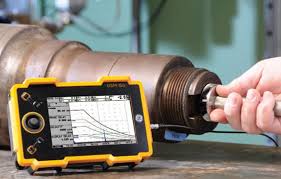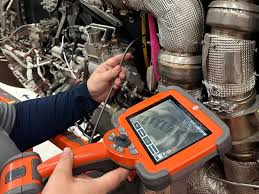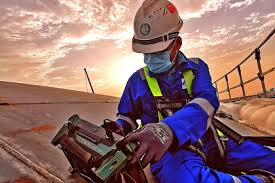Non destructive testing of concrete in Egypt has seen significant advancements in recent years, aimed at ensuring the structural integrity and safety of various infrastructures. This form of testing, which ndt laboratory involves assessing the properties of concrete without causing damage to the structure, has become increasingly important in the field of construction and engineering. With the growing need for reliable and efficient testing methods, researchers and practitioners in Egypt have been working on enhancing and developing new non destructive testing techniques to meet the demands of modern construction projects. This article will explore the latest advancements in non destructive testing of concrete in Egypt, highlighting the innovative approaches and technologies being employed in the industry.
Advancements in non-destructive testing (NDT) of concrete in Egypt have seen the use of innovative techniques such as ultrasonic testing, ground-penetrating radar, and infrared thermography. These methods allow for the assessment of concrete health and structural integrity without causing damage to the structure. NDT has become increasingly important in the construction and maintenance of infrastructure in Egypt, as it helps in detecting defects, cracks, and deterioration in concrete structures, ultimately ensuring their safety and longevity. The continuous development and ndt companies near me adoption of NDT technologies have played a crucial role in improving the quality and reliability of concrete structures in Egypt.
The Importance of Non Destructive Testing for Concrete Structures in Egypt

Non-destructive testing (NDT) is crucial for ensuring the structural integrity and safety of concrete structures in Egypt. With the country's significant reliance on concrete for various construction projects, it's essential to employ NDT methods to evaluate the quality and durability of these structures without causing any damage. NDT techniques such as ultrasound, ground penetrating radar, and impact-echo testing are commonly used to assess the condition of concrete and identify any potential defects or weaknesses. This allows for early detection of problems, preventing costly and potentially hazardous issues in the future. In a country like Egypt, where seismic activity is a concern, NDT plays a crucial role in assessing the seismic resistance of concrete structures. By conducting non-destructive tests, engineers can ensure that buildings and infrastructure are capable of withstanding earthquake forces, thus enhancing the overall safety of the population. Additionally, NDT helps in monitoring the effectiveness of maintenance and repair activities on concrete structures, ensuring that they remain in optimal condition over time. This is particularly important in a country ndt non destructive testing with such a rich historical and cultural heritage, where many ancient and historic concrete structures require regular maintenance and preservation. Overall, the importance of non-destructive testing for concrete structures in Egypt cannot be overstated, as it is vital for maintaining the safety, reliability, and longevity of the built environment.
Advancements in Non Destructive Testing Techniques for Concrete in Egypt

Advancements in non-destructive testing techniques for concrete in Egypt have seen a rise in technologies suchjsonic pulse velocity, ground-penetrating radar, and infrared thermography. These techniques provide efficient and accurate assessment of concrete quality, integrity, and potential defects without the need for invasive methods. This has led to improved safety, longevity, and cost-effectiveness in construction projects across Egypt. Furthermore, ongoing research and development in this field continue to enhance the effectiveness and applicability of non-destructive testing techniques for concrete in the Egyptian construction industry.
The Role of Non Destructive Testing in Ensuring Concrete Safety in Egypt

Non Destructive Testing (NDT) plays a crucial role in ensuring the safety and integrity of concrete structures in Egypt. NDT methods, such as ultrasonic testing, ground-penetrating radar, and infrared thermography, are used to assess the quality and durability of concrete without causing any damage to the structure. In Egypt, where concrete is widely used in construction, NDT helps in detecting potential defects, such as cracks, voids, and delaminations, that could compromise the safety of buildings, bridges, and other infrastructure. By identifying these issues early on, NDT helps in preventing accidents and costly repairs. Furthermore, NDT is instrumental in verifying the strength and load-bearing capacity of concrete, ensuring that structures can withstand the country's environmental conditions and seismic activity. This is particularly important in Egypt, where earthquakes pose a significant risk to infrastructure. Overall, NDT plays a vital role in ensuring the safety and longevity of concrete structures in Egypt, contributing to the country's sustainable development and infrastructure resilience.
Non Destructive Testing: A Key Tool for Evaluating Concrete Quality in Egypt
ndt laboratory
Non Destructive Testing (NDT) is a crucial tool for evaluating the quality of concrete in Egypt. NDT techniques such as ultrasonic testing, radar imaging, and rebound hammer testing are used to assess the internal structure and strength of concrete without causing any damage to the material. This enables engineers and construction professionals to identify any defects or weaknesses in the concrete, allowing for targeted repairs and maintenance. NDT helps ensure the safety and longevity of concrete structures in Egypt, particularly in the face of challenges such as high temperatures, poor construction practices, and environmental factors. By utilizing NDT, Egypt can effectively monitor and maintain the quality of its concrete infrastructure, ultimately supporting the country's development and growth.
Innovative Non Destructive Testing Methods for Concrete in Egypt
Innovative non-destructive testing methods for concrete in Egypt include ground penetrating radar (GPR), ultrasonic pulse velocity testing, impact-echo testing, and digital image correlation. GPR uses radar pulses to image the subsurface and detect any voids, cracks, or other defects in concrete structures. Ultrasonic pulse velocity testing measures the speed of sound waves through concrete to assess its quality and integrity. Impact-echo testing uses stress waves to detect flaws and determine concrete thickness. Digital image correlation involves analyzing images of concrete surfaces to identify any deformations or defects. These advanced testing methods offer efficient and accurate assessment of concrete structures, ensuring their safety and durability.
Challenges and Opportunities of Non Destructive Testing for Concrete in Egypt
Challenges and Opportunities of Non Destructive Testing for Concrete in Egypt: - One of the major challenges in implementing non destructive testing for concrete in Egypt is the lack of awareness and education about the technology among construction professionals and engineers. This can lead to resistance in adopting new methods and techniques for testing concrete structures. - Another challenge is the need for specialized equipment and trained personnel to conduct non destructive testing, which can be costly and require significant investment. - Inconsistent regulations and standards for non destructive testing in Egypt can also pose a challenge for organizations and professionals looking to implement these techniques in their projects. Opportunities: - The growing construction industry in Egypt presents a significant opportunity for the adoption of non destructive testing for concrete. With infrastructure development projects on the rise, there is an increasing demand for reliable and efficient testing methods to ensure the quality and durability of concrete structures. - There is also an opportunity for collaboration and knowledge exchange with international organizations and experts in non destructive testing, which can help in overcoming the challenges and improving the implementation of these techniques in Egypt. - The development of local expertise and capacity in non destructive testing can create opportunities for specialized training and certification programs, leading to a skilled workforce in this field.
The Future of Non Destructive Testing for Concrete Infrastructure in Egypt
The future of non-destructive testing for concrete infrastructure in Egypt is expected to see continued advancements in technology and techniques. This will include the integration of more accurate and reliable testing methods such as ground-penetrating radar, ultrasound, and thermal imaging. These technologies will allow for more comprehensive and efficient assessment of concrete structures, leading to improved maintenance and management of critical infrastructure. Additionally, there will likely be an increased focus on the development of standards and regulations for non-destructive testing in Egypt to ensure the safety and longevity of concrete infrastructure. Overall, the future of non-destructive testing for concrete infrastructure in Egypt holds promise for enhancing the quality and resilience of the country's built environment.